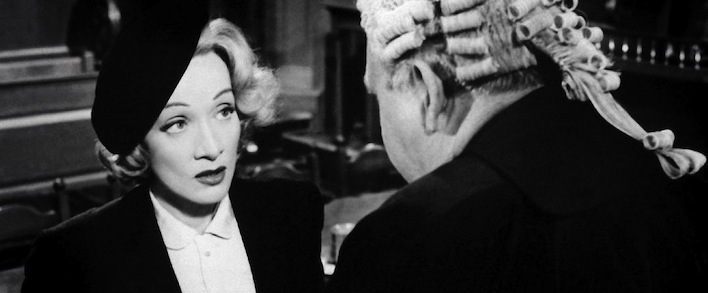“The Scarlet Letter". An Aporetics of Reading and Judgment
Abstract
Divided between the identification with Hester Prynne and the dramatization of his role as juror forced to be inscribed in the interpretive community inside the text, the reader of The Scarlet Letter finds himself in a position that undermines both reading and judgment. By making the reader assume a point of view that contrasts with his own sympathy for Hester, the rhetorical strategy of this novel carries him to recognize, at the end of the reading, how his judgment relies on unconscious prejudices. Bound to judge, the reader is also bound to judge himself in judging and to reconsider the intrinsic blindness that allows him his own insight. Reading (read: judgment) turns into a reflexive activity that deconstructs reader’s rights to read (to judge, of course).
Downloads
References
Bercovitch, Sacvan, The Office of The Scarlet Letter, Baltimore, Johns Hopkins University Press, 1991.
Bernstein, Cynthia, “Reading The Scarlet Letter Against Hawthorne’s Fictional Interpretive Community”, Language and Literature, 18 (1993): 1-20.
Bertoni, Federico, Il testo a quattro mani. Per una teoria della lettura, Scandicci, La Nuova Italia, 1996.
Booth, Wayne C., The Rhetoric of Fiction, Chicago, The University of Chicago Press, 19832, trad. it. Retorica della narrativa, Scandicci, La Nuova Italia, 1996.
Brooke-Rose, Christine, “A for But: ‘The Custom-House’ in Hawthorne’s The Scarlet Letter”, Word & Image, 3.2, 1987: 143-155; poi “A for but: Hawthorne’s 'The Custom-House'”, in Id., Stories, theories, and things, Cambridge, Cambridge University Press, 1991: 47-62.
Cacciani, Maurizio, “Giuria”, Enciclopedia giuridica, volume XVII, Roma, Istituto Poligrafico e Zecca dello Stato, 1989.
Ceserani, Remo, Convergenze. Gli strumenti letterari e le altre discipline, Milano, Bruno Mondadori, 2010.
Culler, Jonathan, On Deconstruction. Theory and Criticism after Structuralism, Ithaca, Cornell University Press, 1982, trad. it. Sulla decostruzione, Ed. Sandra Cavicchioli, Milano, Bompiani, 20022.
De Angelis, Valerio Massimo, “Voci dal palco: George Bancroft, Nathaniel Hawthorne, e la scrittura dell’oralità, Ácoma, 6.1 (1996): 35-43.
De Angelis, Valerio Massimo, La prima lettera. Miti dell’origine in ‘The Scarlet Letter’ di Nathaniel Hawthorne, Roma, Lozzi & Rossi, 2001.
De Angelis, Valerio Massimo, Nathaniel Hawthorne. Il romanzo e la storia, Roma, Bulzoni, 2004.
Derrida, Jacques, Apories. Mourir – s’attendre aux «limites de la vérité», Paris, Galilée, 1996, trad. it. Aporie. Morire – attendersi ai «limiti della verità», Milano, Bompiani, 1999.
Derrida, Jacques, Voyous. Deux essais sur la raison, Galilée, Paris, 2003, trad. it. Stati canaglia. Due saggi sulla ragione, Milano, Cortina, 2003.
Iser, Wolfgang, Der Akt des Lesens, München, Fink, 1976, trad. it. L’atto della lettura. Una teoria della risposta estetica, Bologna, il Mulino, 1987.
Eco, Umberto, Opera aperta. Forma e indeterminazione nelle poetiche contemporanee (1962), Milano, Bompiani, 19934.
Eco, Umberto, Interpretation and overinterpretation, Ed. Stefan Collini, New York, Cambridge University Press, 1992, trad. it. Interpretazione e sovrainterpretazione. Un dibattito con Richard Rorty, Jonathan Culler e Christine Brooke-Rose, Ed. Sandra Cavicchioli, Milano, Bompiani, 1995.
Fish, Stanley, “Literature in the Reader: Affective Stylistics”, in Is There a Text in This Class? The Authority of Interpretive Communities, Cambridge (Massachusetts), Harvard University Press, 1980: 21-67, trad. it. “La letteratura nel lettore: per una stilistica affettiva”, in C’è un testo in questa classe? L’interpretazione nella critica letteraria e nell’insegnamento, Torino, Einaudi, 1987: 25-76.
Foucault, Michel, Surveiller et punir. Naissance de la prison, Paris, Gallimard, 1975, trad. it. Sorvegliare e punire. Nascita della prigione, Torino, Einaudi, 1976.
Fusini, Nadia, Hester Prynne (Nathaniel Hawthorne, La lettera scarlatta, 1850), Il romanzo (IV). Temi, luoghi, eroi, Ed. Franco Moretti, Torino, Einaudi, 2003: 699-704.
Hawthorne, Nathaniel, The Scarlet Letter (1850), Vol. 1 of The Centenary Edition of the Works of Nathaniel Hawthorne, Eds. William Charvat, Roy Harvey Pearce and Claude M. Simpson, Columbus, Ohio State University Press, 1962.
Korobkin, Laura, “The Scarlet Letter of the Law: Hawthorne and Criminal Justice”, Novel: a Forum on Fiction, 30.2 Winter 1997: 193-217.
Mathé, Sylvie, “The Reader May Not Choose: Oxymoron as Central Figure in Hawthorne’s Strategy of Immunity from Choice in The Scarlet Letter”, Style, 26.4 (Winter 1992): 604-633.
Nussbaum, Martha C., Poetic Justice. The Literary Imagination and Public Life, Boston Beacon, 1995, trad. it. Il giudizio del poeta. Immaginazione letteraria e vita civile, Milano, Feltrinelli, 1996.
Posner, Richard A., Law and Literature, Revised and Enlarged Edition, Cambridge (Massachusetts) and London, Harvard University Press, 1998.
Railton, Stephen, Authorship and Audience: Literary Performance in the American Renaissance, Princeton, Princeton University Press, 1991.
Copyright Notice
You are free to copy, distribute and transmit the work, and to adapt the work. You must attribute the work in the manner specified by the author or licensor (but not in any way that suggests that they endorse you or your use of the work).









